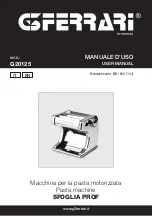
III-4
3.2.3
Key Contacts Matrix
[ 1 ]
Key contacts matrix
On the main PCB is a key contacts matrix that is a set of carbon-printed 41 key (PT-1250/1160: 40
key + tact switch) contact patterns. Each contact pattern has a pair of electrodes.
The rubber 42 key (PT-1250/1160: 41 key) is made of high-impedance silicon rubber. As shown in
Fig. 3.2-3, each key on the rubber 42 key (PT-1250/1160: 41 key) consists of a key top, rubber
spring, and conductive paint which functions as a switching element.
If a particular key is pressed, the conductive paint of the key short-circuits the paired electrodes
carbon-printed on the main PCB.
Fig. 3.2-4 shows a timing chart and waveforms of key scanning by the CPU. Ports P71 through
P76 on the CPU produce a series of key scanning pulses. Every scanning pulse is in low
impedance for 1 ms while active and in high impedance while inactive. Ports P60 through P67 act
as input ports which receive key status.
The CPU scans the key contacts matrix every 10 ms. If the CPU reads the same data on an input
port two successive times, it interprets the state as the key being pressed; if the CPU reads the
same data six successive times, it interprets the state as the key being released. The input mode
of this keying system is 2-key roll-over and 3-key lock-out.
Fig. 3.2-3 Detailed Mechanism of a Key
Fig. 3.2-4 Timing Chart and Waveforms of Key Scanning by the CPU
Key top
Rubber spring
Electrodes
Conductive paint
Main PCB
Summary of Contents for P-touch PT-1100
Page 2: ...SERVICE MANUAL MODEL PT 1100 1130 1170 1180 11Q PT 1250 1160 ST 1150 Heavy Duty LabelerTM ...
Page 5: ...CHAPTER I SPECIFICATIONS ...
Page 9: ...I 3 Fig 1 1 2 Key Arrangement 1 ...
Page 10: ...I 4 Fig 1 1 2 Key Arrangement 2 ...
Page 11: ...I 5 Fig 1 1 2 Key Arrangement 3 ...
Page 13: ...CHAPTER II MECHANISMS ...
Page 50: ...35 II 2 3 4 Troubleshooting Flows 1 Tape feeding failure ...
Page 51: ...36 II ...
Page 52: ...37 II 2 Printing failure ...
Page 53: ...38 II ...
Page 54: ...39 II 3 Powering failure Nothing appears on the LCD ...
Page 55: ...40 II 4 No key entry possible ...
Page 56: ...CHAPTER III ELECTRONICS ...
Page 75: ...III 17 3 3 3 Troubleshooting Flows 1 Tape feeding failure 2 Printing failure ...
Page 76: ...III 18 3 Powering failure Nothing appears on the LCD ...
Page 77: ...III 19 4 Abnormal LCD indication ...
Page 78: ...III 20 5 No key entry possible 6 Tape cassette type not identified ...
Page 80: ......
Page 81: ......
Page 82: ......
















































